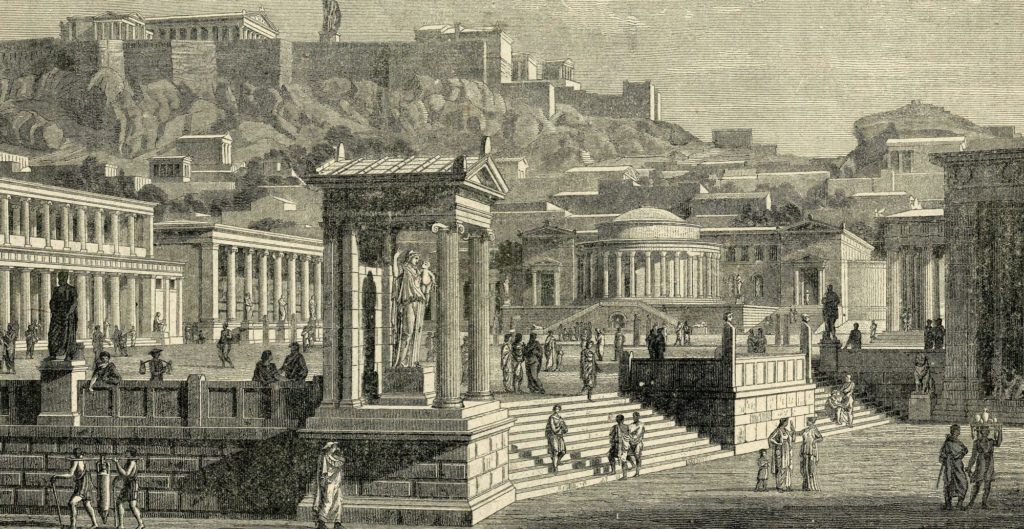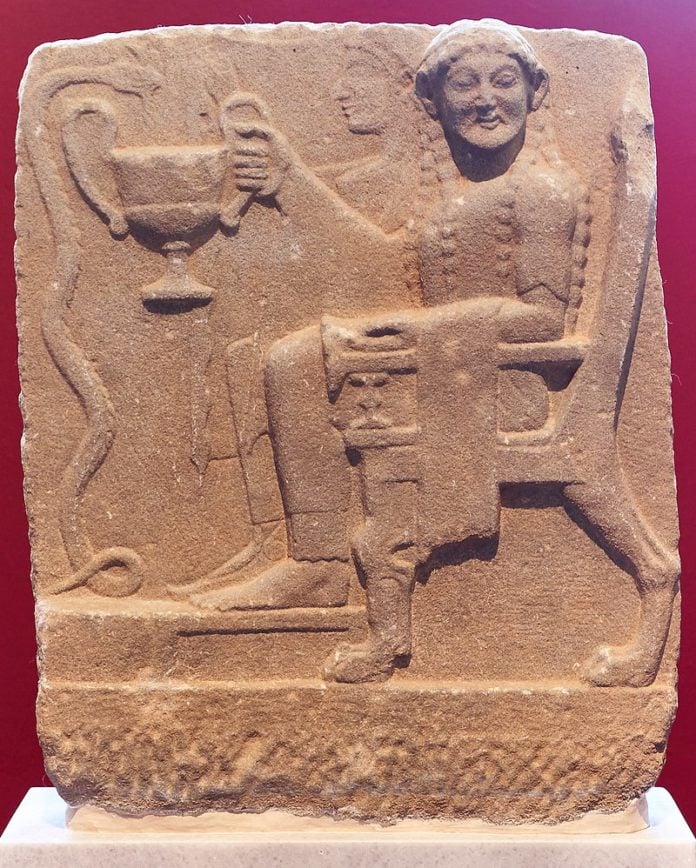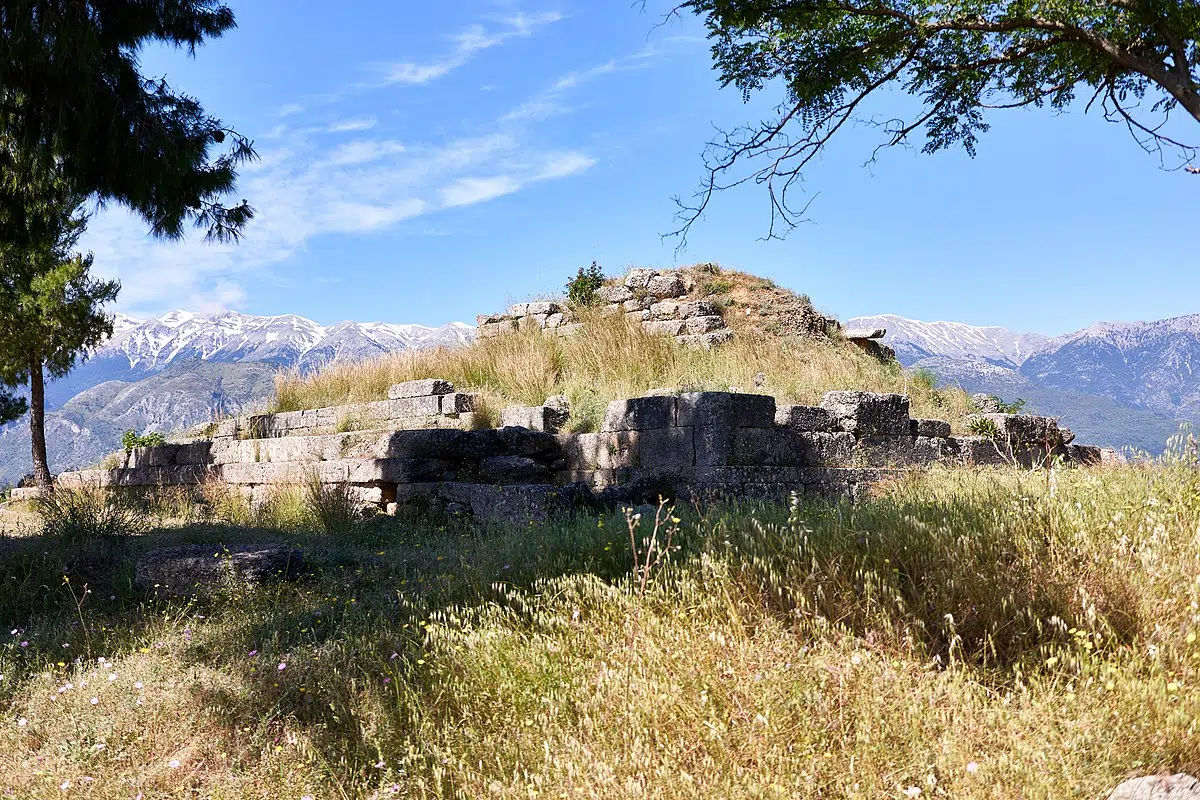
Athens and Sparta in ancient times were two very different societies, yet the two legendary city-states continue to hold priceless historic value for Greece and the world in general.
On the one hand, Athens remains one of the beacons of Western Civilization. It is the home of great philosophers and artists who built the Parthenon, structures, and sculptures of Acropolis Hill and the rest of Greece.
Athens is also the place where democracy was established, the economy flourished, and politics took off to spread to other city-states of the time. Socrates and Plato are names that still ring in the ears of Westerners.
Sparta, on the other hand, will remain forever in Western conscience as the place of heroes, master warriors, and gallant protectors of Greek civilization for many years.
The name of Leonidas and the Battle of Thermopylae continue to ignite the imagination for brave actions and fearless devotion to the homeland. Furthermore, the word spartan in the Modern English vocabulary has come to mean austerity and simplicity.
Athenians were more interested in cultivating the mind, while Spartans wanted to build strong bodies for battle. Ironically, Athens was more expansionist, while Sparta was content in its kingdom, always providing troops to the rest of Greece.
In regards to their economies, during the Classical Age for Greece (from 500 BC until the death of Alexander the Great in 323 BC), Athens was based on trade and was the foremost trading power in the Mediterranean.
Sparta, on the other hand, had an agricultural economy, even though the rocky Laconian land was not as rich.
There was one point where the two cultures clashed, inevitably. The prize of the Peloponnesian War (441-404 BC) between Athens and Sparta and their respective allies was the hegemony of Greece.

Governance in Athens and Sparta
Sparta’s governing had elements of a monarchy, oligarchy, and aristocracy. It was ruled by a king, but the council members and senators were elected, albeit from upper class citizens.
The king ruled for life and passed the crown to his son. Five ephors were elected annually. The Spartan equivalent of the senate was called “gerousia” (elderly in Greek) and the king and ephors would attend the general assembly.
The general assembly would try to pass motions and decrees, vote to pass legislation, and make civil decisions. The process for the general assembly was by a simple shouting of “yes” or “no.”
Overall, Sparta’s system of government was very exclusive and open only to members of the highest social standing.

Early Athens, much like Sparta, was ruled by kings. In 550 BC, Athenian politics would evolve to resemble an early form of democracy. The Athenian system of democracy was set up as a direct democratic process in which citizens were able to vote directly on legislation.
However, only men who had completed their military service were actually allowed to vote or participate. This would constitute about twenty percent of the total population.
In the Greek language, democracy means “rule by the people”—“demos” (people) and “kratis” (rule). Every year, five to six thousand men were narrowed down to a group of five hundred, who would then be divided into groups of fifty. Each would take charge for about a month, and ten generals were automatically elected based on their experience.
The Athenian assembly, known as the “ekklesia,” would discuss political, militaristic, and social matters and agendas in the Pnyx. This was an area near the markets and social center of Athens, the “agora”.
Even though voting was restricted and women were not allowed to vote, Athenian democracy was successful and well maintained. Today, Athens is considered the birthplace of democracy.
The Athenian and Spartan Societies
The type of government in the two different city-states determined for the most part the status of the two societies.
Athenians had a more open outlook on how they lived. They were a society in which boys were not forced to join the army. In Athens, a young person could get a good education and pursue arts and sciences.
Overall, Athenians were more interested in the arts and philosophical matters. Athens was the birthplace of Socrates and Plato, an ideal place for their ideas to flourish.
During the Classical Period, Athens excelled in the construction of architectural monuments such as the Parthenon and the other structures and sculptures on the Acropolis.
Men held all the rights and privileges, and therefore advantages, in patriarchal Athenian society. Women were dedicated homemakers, taking care of the children and family.

Some women, known as hetaeras (or haiteres), did receive an education with the specific purpose of entertaining men and providing sex services. Hetaeras were considered higher in status than other women but were still lower in status than men.
The Athenian elite lived modestly and without great luxuries compared to the wealthy in other ancient societies. Wealth and land ownership was not concentrated in the hands of the few. In fact, seventy-one to seventy-three percent of the citizen population owned sixty to sixty-five percent of the land.
A huge difference between Athens and Sparta pertained to the role of women. Spartan women had more rights and were more autonomous than women in other Greek city-states of the Classical Period.
The main reason for this was that their purpose in Spartan society was to give birth to future soldiers for the city-state.
Spartan women could inherit property, own land, make business transactions, and were better educated than women in Ancient Greece in general.
They were also stronger and had the right to form liaisons with men as they chose. They could even individually own property.
As for homemaking, typical household chores were done by helots (slaves) so the women could concentrate on grooming the boys to begin training as soldiers at the age of seven.
The Inevitable War Between Athens and Sparta
It was almost inevitable that two such strong societies as those of Athens and Sparta in the same era would at one point clash with each other. They were rival city-states, yet they would come together against enemies.
Athens and Sparta were two rival city-states, and while the latter had extremely well trained military and soldiers, the former had established an efficient navy.
In 431 BC, Athens and its allies, known as the Delian League, came into conflict with the Spartans and the Peloponnesian League. War broke out between the two cities—a war based on trade routes, rivalries, and tributes paid by smaller dependent states.
The Peloponnesian War, basically an Athens-Sparta war, was a 28-year period of on and off civil war among the two strongest city-states of the time.
Sparta had a clear military advantage on land, but the Athenian navy naturally surpassed Sparta’s capabilities at sea.
Both were powerful but neither side was able to seize and maintain true superiority. Both sides experienced major victories and crushing defeats, and the war was frequently interrupted by periods of negotiated peace.
In 433 BC, Corinth brought in Sparta to negotiate a conflict with the city-state of Corcyra, which had been a longtime enemy.
In turn, Corcyra asked for the support of Athens, arguing that it would not be able to defend itself against the Sparta-Corinth alliance. Athenian leader Pericles proposed a defensive alliance and sent a small number of ships to protect Corcyra from Corinth.
Corinth attacked Corcyra at Sybota without the support of Sparta. Once the Corinthians saw the Athenian ships, they retreated. Athens, convinced it was about to enter war with Corinth, strengthened its military hold in the region.
Sparta was hesitant to enter the upcoming war directly, but was eventually convinced by Corinth to do so, though this was not a popular decision among Sparta’s other allies.
The Peloponnesian War
A year passed as Sparta sent three delegations to Athens to avoid war, offering proposals that could be viewed as a betrayal of Corinth. Pericles rejected peace. In 431 BC, the Peloponnesian War started.
The first ten years of the conflict are known as the “Archidamian War,” named so after Spartan King Archidamus. Sparta used the slogan “Freedom for the Greeks,” stating its aim was to liberate the states under Athenian rule.
As Spartan forces surrounded Athens in a siege, destroying the countryside and farmland, Pericles declined to engage against them near the city’s walls, instead leading naval campaigns elsewhere.
Pericles returned to Athens in 430 BC as a plague ravaged the city. The plague killed nearly two-thirds of the population. A political uprising led to his censure, and he succumbed to the plague in 429 BC.
However, despite the fact that the Athenian leadership was fractured, the Spartans saw that they suffered major losses in western Greece and at sea.
In 423 BC, both sides signed a treaty known as the Peace of Nicias, named after the Athenian general who engineered it. It was meant to last fifty years, but eight years later, the second phase of war started.
This was when Athens received a call to help allies in Sicily against invaders from Syracuse, where an Athenian official defected to Sparta. He convinced the Spartans that Athens was planning to conquer Italy.
Sparta allied with Syracuse and defeated the Athenians in a major sea battle. Yet, Athens did not succumb and won a string of naval battles against Sparta, which sought monetary and weapons support from the Persian Empire.
Under Spartan general Lysander, the war raged for another decade. In 405 BC, Lysander decimated the Athenian fleet in battle and then held Athens under siege, forcing it to surrender to Sparta in 404 BC.
The Peloponnesian War marked the end of the Golden Age of Greece, defined by a change in styles of warfare and the fall of Athens, which was once the strongest city-state in Greece.
Athens was absorbed into the Spartan Empire. It continued to exist under a series of tyrants and then a democracy. It also lost its dominance in the region to Sparta until both were conquered less than a century later by the kingdom of Macedon.
See all the latest news from Greece and the world at Greekreporter.com. Contact our newsroom to report an update or send your story, photos and videos. Follow GR on Google News and subscribe here to our daily email!



